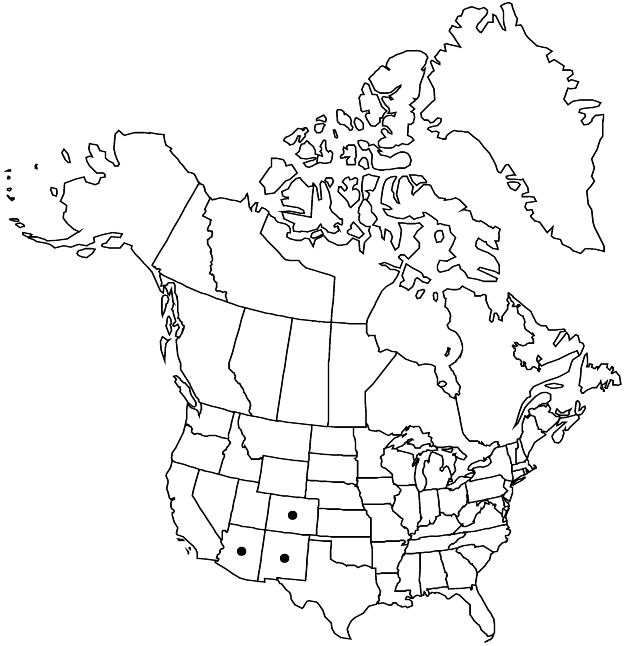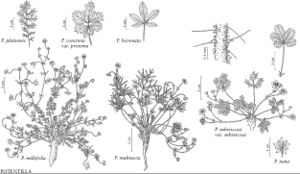Potentilla subviscosa var. subviscosa
Stems 0.2–1 (–1.5) dm. Basal leaves often notably seasonally dimorphic, (1–) 2–6 (–18 in late-season) cm; petiole (0.5–) 1–4 (–10 in late-season) cm, long hairs 1–1.5 (–3) mm (sparse in early-season), central leaflets obovate to flabellate (to oblanceolate in late-season), (0.5–) 1–3 (–8 in late-season) cm, early-season evenly to unevenly incised 1/2–3/4 to midvein (sometimes deeply lobed as well), teeth 3–7 per side (sometimes secondarily toothed), late-season evenly incised 1/5–1/4 to midvein, teeth 6–9 per side. Flowers: sepals 3–4 mm; petals (3–) 4–6 (–7) mm. Achenes 2 mm, strongly rugose, with large prominent scar.
Phenology: Flowering Apr–Jun.
Habitat: Open pine woodlands, grassy flats, hillsides, sandstone ridges
Elevation: 1200–2500 m
Distribution

Ariz., Colo., N.Mex.
Discussion
Variety subviscosa is widespread in the mountains of New Mexico and north of the Mogollon Rim in Arizona, barely entering Colorado in the Sangre de Cristo Range. The variety often has striking seasonal differences in leaf shape and petiole vestiture, best developed in Arizona populations. Leaves formed early in the season and coinciding with peak flowering have deeply divided leaflets, and the petiole vestiture often consists almost exclusively of glands. Later-formed leaves are sometimes significantly larger and have progressively less deeply divided leaflets and increasing densities of both short and long hairs.
Selected References
None.
Lower Taxa
"thin" is not a number."dm" is not declared as a valid unit of measurement for this property."-3(-5)timesbasalleaves" is not declared as a valid unit of measurement for this property."dm" is not declared as a valid unit of measurement for this property."dm" is not declared as a valid unit of measurement for this property.
